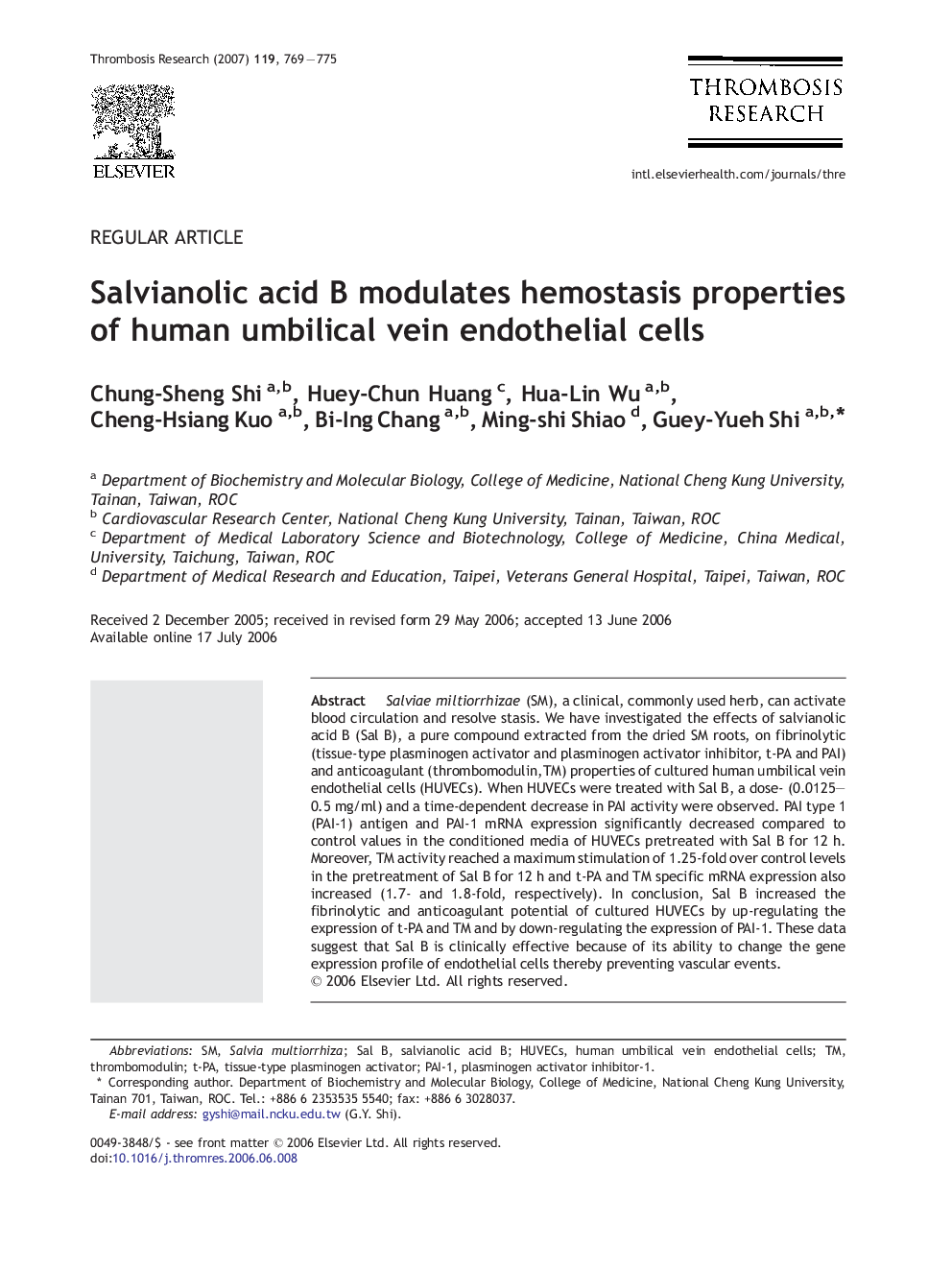| Article ID | Journal | Published Year | Pages | File Type |
|---|---|---|---|---|
| 3030135 | Thrombosis Research | 2007 | 7 Pages |
Salviae miltiorrhizae (SM), a clinical, commonly used herb, can activate blood circulation and resolve stasis. We have investigated the effects of salvianolic acid B (Sal B), a pure compound extracted from the dried SM roots, on fibrinolytic (tissue-type plasminogen activator and plasminogen activator inhibitor, t-PA and PAI) and anticoagulant (thrombomodulin,TM) properties of cultured human umbilical vein endothelial cells (HUVECs). When HUVECs were treated with Sal B, a dose- (0.0125–0.5 mg/ml) and a time-dependent decrease in PAI activity were observed. PAI type 1 (PAI-1) antigen and PAI-1 mRNA expression significantly decreased compared to control values in the conditioned media of HUVECs pretreated with Sal B for 12 h. Moreover, TM activity reached a maximum stimulation of 1.25-fold over control levels in the pretreatment of Sal B for 12 h and t-PA and TM specific mRNA expression also increased (1.7- and 1.8-fold, respectively). In conclusion, Sal B increased the fibrinolytic and anticoagulant potential of cultured HUVECs by up-regulating the expression of t-PA and TM and by down-regulating the expression of PAI-1. These data suggest that Sal B is clinically effective because of its ability to change the gene expression profile of endothelial cells thereby preventing vascular events.
